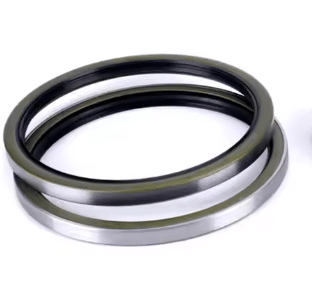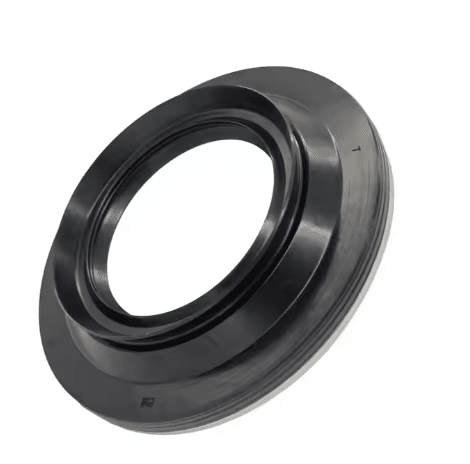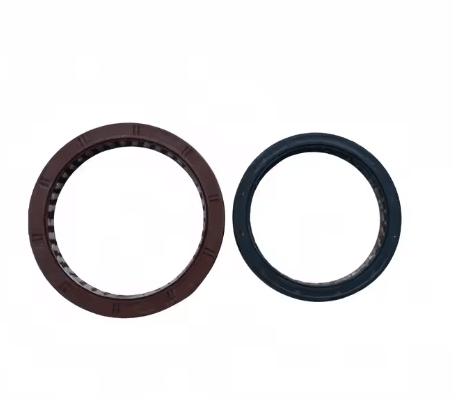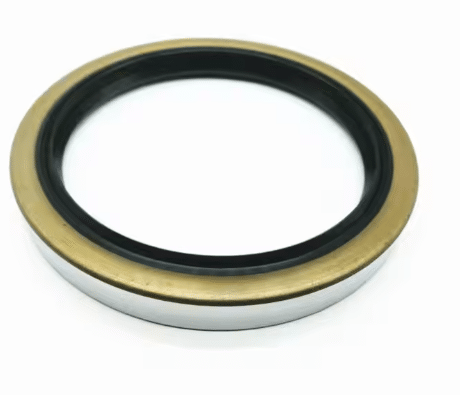Got a mysterious oil stain under your car? It might be a failing differential pinion seal — and ignoring it could cost you a gearbox.
A differential pinion seal prevents fluid from leaking out where the driveshaft connects to the differential. When it fails, you'll notice leaks, whining noises, or worse — drivetrain failure.

If you’ve ever spotted gear oil near your rear axle or noticed a faint burning smell during long drives, the pinion seal may be the culprit. Let’s break down everything you need to know — from symptoms to step-by-step replacement and smart sourcing tips.
What does a differential pinion seal do?
Think your drivetrain is sealed tight? Not if your pinion seal fails — this small but mighty part protects your gears and extends the life of your axle.
The pinion seal keeps differential fluid inside while allowing the driveshaft to rotate freely. Without it, gear oil leaks out, and internal components wear down fast.

How does the pinion seal protect your rear differential?
Here’s a breakdown of how it works:
| Komponente | Funktion | Common Issues |
|---|---|---|
| Pinion Seal | Seals the pinion gear input shaft | Leaks due to wear/heat |
| Yoke | Rotates with driveshaft | Grooving or imbalance |
| Gear Oil | Lubricates internal gears | Loss from seal failure |
From my experience supplying commercial fleets, this seal is often overlooked — until a leak happens mid-operation. And that leads to emergency downtime and unnecessary repair costs.
What are the common symptoms of a bad pinion seal?
Ever wondered what that burnt oil smell is coming from your truck? Or why there’s a drip near the rear axle?
The most common signs of pinion seal failure include visible gear oil leaks, unusual noises during acceleration, and vibration from the rear differential.

What are the warning signs you shouldn’t ignore?
- Gear oil leaking at the rear differential
- Whining noise when driving
- Greasy build-up around the driveshaft connection
- Smell of burnt gear oil
- Vibration or rumble under load
A recent customer running delivery trucks in the Midwest ignored these symptoms and ended up replacing the entire differential — a $1,500+ mistake that a $20 pinion seal could have prevented.
How do you replace a differential pinion seal?
Thinking about DIY replacement? It’s doable — but only if you have the right tools, and follow each step closely to avoid damaging the yoke or gears.
To replace a pinion seal, remove the driveshaft, take out the yoke, pull the old seal, press in a new one, and reassemble with proper torque specs.

What’s the step-by-step process for replacing a pinion seal?
- Lift the vehicle securely and mark the driveshaft position.
- Remove the driveshaft from the yoke.
- Remove the pinion nut and pull the yoke.
- Pry out the old seal carefully.
- Install the new seal using a seal driver.
- Reinstall the yoke and torque the nut to spec.
- Reattach the driveshaft and test for leaks.
Need the right seal? You can find OEM-quality options like our TG4 Öldichtung with high heat and oil resistance, perfect for heavy-duty trucks.
What causes a pinion seal to leak?
The seal doesn’t just wear out from time — it often fails from harsh conditions like heat cycles, poor lubrication, or improperly torqued fasteners.
Causes of pinion seal leaks include worn yokes, incorrect installation, heat degradation, and contamination by dirt or debris.
Why do pinion seals fail even with regular use?
| Ursache | Beschreibung | Vorbeugender Tipp |
|---|---|---|
| Heat Damage | Constant thermal cycles break down rubber seals | Choose high-temp FKM seals |
| Misalignment or Bad Yoke | Uneven contact causes seal damage | Inspect yoke before installation |
| Low Fluid Levels | Lack of lubrication accelerates wear | Regular fluid checks |
| Over-torqued Installation | Crushes the seal lip | Use torque wrench during install |
When we work with fleet operators, we always advise checking the yoke groove — if it’s worn, the seal won’t seat properly no matter how new it is.
Where to buy the right pinion seal for your vehicle or fleet?
Not all seals are created equal — especially if your application involves high RPM or towing. Cheap seals will crack or leak under pressure.
Look for a pinion seal made from NBR or FKM, tested for OEM tolerance, and backed by real industrial reliability — like our OEM Truck Oil Seals available in custom sizes.
How do you ensure compatibility and durability?
- Check the OEM reference or size
- Choose double-lip options for better protection
- Match material to your fluid type (NBR for oil, FKM for high temp)
- Work with suppliers who offer low MOQs and technical support
Need help choosing? Drop us a part number — we’ll cross-reference and recommend the right seal from our custom oil seal catalog.
Abschluss
A differential pinion seal may be small, but it plays a major role in protecting your drivetrain. Replace it early, and avoid costly repairs.
Take control of your fleet’s downtime now
Get OEM-grade pinion seals, fast delivery, and expert advice tailored to your application.
📧 Email: [email protected] | 📞 WhatsApp: +86 17622979498
Related topic
Rear Axle Seal Leak Repair Cost
TG4 Oil Seal: Double Lip Skeleton Design
Querverweistabelle für Öldichtungen


